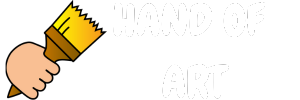Sheep are gentle, fluffy farm animals known for their soft wool and sweet faces. They are often found in fields and meadows, calmly grazing in groups.
Sheep’s woolly coats serve as attractive outfits that engage artists in drawing cute sketches. Likewise, you will find a basic step-by-step tutorial showing you how to draw a sheep. Please get your pencil, paper, and drawing tools so we can start.
Art Materials & Equipment
- Drawing Paper
- Colors of Your Choices
- Pencil
- Eraser
- Pen
- Sharpener
- Marker
- Ruler
Steps to Draw a Sheep
Here’s a quick preview of today’s sheep drawing tutorial. We’ll begin with the face and wool, then move on to sketching the body, legs, and final details. Follow along with us step by step to draw a sheep with ease.

Step 1: Start with the Face

Begin with an oval or half-rounded shape for the sheep’s face. Make it a bit wider at the bottom to give it a friendly look.
Step 2: Sketch the Head Wool

Above the face, draw a fluffy cloud-like shape using soft, bumpy curves to represent the wool on top of the sheep’s head. Review the image for a better drawing.
Step 3: Add the Ears

On each side of the head, sketch a long, gently curved ear that stretches outward and slightly points downward. Make sure both ears are balanced and similar in shape to keep the drawing looking symmetrical and natural.
Step 4: Sketch the Body Shape

Use a large, puffy, cloud-like shape for the body. Start from the side of the head and go around in a bumpy circle or oval to create a fluffy, woolly body.
Step 5: Add the Shape of the Neck and Tail

Begin shaping the neck by drawing a smooth, curved line that extends downward from the side of the head. This gentle curve will help connect the head to the body naturally and give the sheep a soft posture. Now, sketch the circle at the back of the body to represent the tail.
Step 6: Draw a Front Leg

Sketch straight front legs coming down from the front of the body. Make them slightly rounded at the ends for the hooves.
Step 7: Sketch the Right Side Front Leg

Following the same step, we drew one front leg, sketching a straight leg with a rounded end. Keep the shape smooth and natural, matching the thickness and style.
Step 8: Add Left Back Leg

Draw the back leg under the rear side of the body. These should match the front legs in length and shape. Follow the same step to sketch the shape of the leg.
Step 9: Sketch the Right Back Leg

Draw the back leg by aligning it with the front leg’s position. Sketch with the same process we did for all three legs. This will complete shaping the leg of the sheep.
Step 10: Draw the Mouth

Sketch a short horizontal line crossing over the vertical line to create the sheep’s mouth, just like in the reference image. This simple shape adds a friendly expression to the sheep’s face. Along with adding the shape of the mouth, give details to the sheep’s ear by adding some lines.
Step 11: Design the Eyes

Draw small, horizontal ovals with a soft curve. Add a tiny circle inside for highlights to make them lively. Keep the pupils large and dark for a cute, innocent appearance.
This will finally complete the process of sketching the sheep. Remove any extra lines from the sketch and let’s move on to the coloring process.
Coloring The Sheep
It is time to add color and bring the sheep to existence. We have just added two colors to this drawing. We have chosen a dark grey color, but Choose light grey, peach, or soft brown. Color for the face along with ears and legs. Choose a black color and cover both hoof areas.
Color Details:
- Dark Grey
- Black

This wraps up the coloring process. We’ve used basic pencil colors, but feel free to use any coloring tools you prefer. You can get creative with your own color choices to make your sheep drawing unique. To add more touch to your sketch, you can use a black marker to outline the shape to give the sketch a bold look.
Your Artwork Is Ready
Awesome work! You’ve finished drawing your cute sheep. With its fluffy wool, sweet smile, and gentle eyes, your sheep is now ready to shine. We hope you enjoy the sketching and coloring process.
This tutorial is perfect for both beginners and more advanced artists. We’d love to hear about your experience or any feedback you may have. Your input is important to us, and we look forward to seeing you again soon! Keep practicing, try different colors, and don’t forget to have fun while drawing


